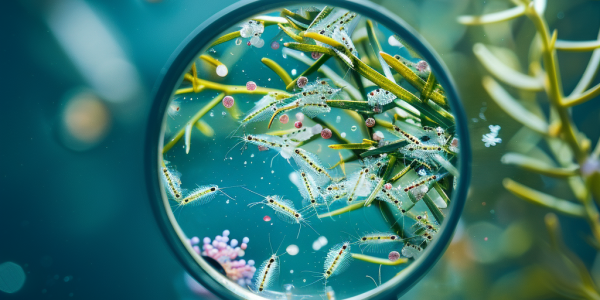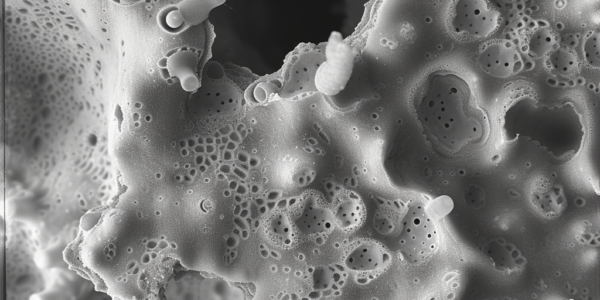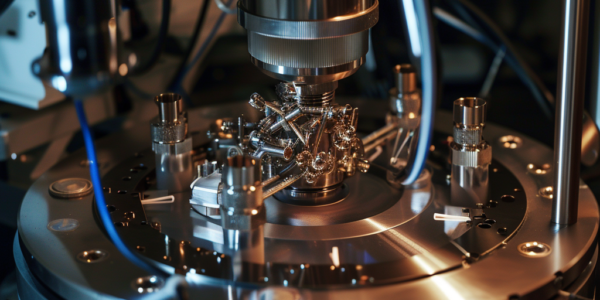Honeybees: Nature’s Allies in Pollution Monitoring
Honeybees are emerging as vital allies in pollution monitoring in Canada, collecting environmental data through their foraging habits. Recent research highlights their potential to analyze local pollution levels by examining honey samples, providing crucial insights into ecosystem health. This innovative approach not only emphasizes the importance of honeybees in environmental stewardship but also fosters community engagement in combating pollution.
Study Reveals Alarming Effects of Microplastics and PFAS on Aquatic Ecosystems
Recent research from the University of Birmingham reveals the alarming effects of microplastics and PFAS on aquatic ecosystems. Published in Environmental Pollution, the study shows that the combination of these pollutants leads to severe toxic effects on water fleas, highlighting the urgent need for further investigation and action to combat plastic pollution and harmful chemicals in our water systems.
Monitoring Air Quality for Healthier Living Environments
Learn about the impact of wildfires on air quality and health, and how to monitor and improve air quality for better overall health outcomes. Follow Briana Conner for air quality updates and prioritize your health by staying informed and taking necessary precautions.
Pollution and Crime: The Correlation Revealed
Recent research is revealing a concerning correlation between exposure to pollution and an increase in criminal behavior. Studies show that pollutants like particulate matter, lead, and noise can impair cognitive function, increase aggression, and reduce impulse control, potentially contributing to higher crime rates. Addressing environmental pollution is crucial for creating a more just and sustainable society.
Study Finds Plastic Toy Building Bricks Contribute to Microplastic Pollution
Recent research has revealed that plastic toy building bricks can contribute to microplastic and nanoplastic pollution within households and childcare settings. The University of Newcastle study found that playing with these bricks releases thousands of tiny particles, posing potential health risks. This highlights the need for caution and further investigation into the impact of these plastic particles on indoor environments.
Novel UV Broadband Spectrometer Revolutionizes Air Pollutant Analysis
Learn about the world’s first broadband UV dual-comb spectrometer developed by researchers at Graz University of Technology, allowing for continuous measurement of air pollutants and real-time observation of their reactions with the environment. This innovative device offers a large bandwidth of emitted UV light, high spectral resolution, and short measurement times for sensitive measurements.
Study Links Nasal Key Driver Genes to Ozone and Fine Particulate Matter Exposure in Asthma Patients
A recent study presented at the American Academy of Allergy, Asthma & Immunology Annual Meeting revealed that various nasal key driver genes are linked to ozone and fine particulate matter exposure in patients with asthma. The study, conducted by researchers including Supinda Bunyavanich, MD, MPH, MPhil, and Yoojin Chun, MS, analyzed data from 167 patients with mild to severe persistent asthma in the New York metropolitan area. The findings shed light on the genetic factors associated with asthma exacerbations due to environmental exposures, highlighting the importance of addressing air quality issues to improve asthma control and management.
Industrial Pollutants Found in Mediterranean Corals for the First Time
Scientists at University College London have discovered industrial pollutants embedded in Mediterranean corals for the first time, offering a potential new tool to track the history of pollution. The finding marks a historical marker of the proposed Anthropocene epoch, highlighting the extensive impact of human activity on the environment. This groundbreaking research sheds light on the impact of industrial pollutants on marine ecosystems and provides valuable insights into the long-term effects of fossil fuel combustion.
Breakthrough in Carbon Dioxide Waste Conversion
McMaster University researchers, in collaboration with experts at Copenhagen’s Danish Technical University, have made a breakthrough in carbon dioxide waste conversion. Their research focuses on an electrochemical process to capture and restructure carbon dioxide into fuel and plastics, offering promise for mitigating air pollution and creating valuable products. The study’s findings have significant implications for the advancement of carbon dioxide conversion technologies and sustainable waste management.
Study Shows Permeable Pavements Can Reduce Tire Pollutants Harmful to Salmon
This week’s top engineering news brings a groundbreaking study from Washington State University, revealing the potential of permeable pavements in reducing tire pollutants that are harmful to salmon. The study, published in the journal Science of The Total Environment, highlights…










